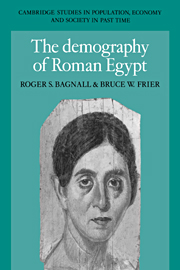Book contents
- Frontmatter
- Contents
- List of figures
- List of tables
- Foreword
- Preface
- A note on references and abbreviations
- 1 The census returns
- 2 The census returns as demographic evidence
- 3 Households
- 4 Female life expectancy
- 5 Male life expectancy and the sex ratio
- 6 Marriage
- 7 Fertility
- 8 Migration
- 9 Conclusion
- Catalogue of census declarations
- Catalogue of census declarations Supplement
- Appendixes
- Bibliography
- Index
- Cambridge Studies in Population, Economy and Society in Past Time
Catalogue of census declarations
Published online by Cambridge University Press: 06 January 2010
- Frontmatter
- Contents
- List of figures
- List of tables
- Foreword
- Preface
- A note on references and abbreviations
- 1 The census returns
- 2 The census returns as demographic evidence
- 3 Households
- 4 Female life expectancy
- 5 Male life expectancy and the sex ratio
- 6 Marriage
- 7 Fertility
- 8 Migration
- 9 Conclusion
- Catalogue of census declarations
- Catalogue of census declarations Supplement
- Appendixes
- Bibliography
- Index
- Cambridge Studies in Population, Economy and Society in Past Time
Summary
The attached list of census declarations from Roman Egypt, brought up to date as of 1 November 1993, has been produced according to a fixed scheme. Households are given numbers consisting of the digits of the first julian year of the regnal year of the census, two letters designating the nome, and a (largely arbitrary) serial number within the group; they are organized in order of these household numbers, i.e. first by census, then by nome, then by household. Persons are given by status groups, and within these in the order in which they are given in the papyrus. Cross-reference numbers operate within the status group unless indicated otherwise, except that the declarant is always referred to as such except when ambiguity would result.
All returns that were used in generating the data base are marked in this Catalogue with an asterisk (*) at the beginning of the entry. We provide stemmata for households in which there is a kin relationship between two or more members, or in which a relationship can plausibly be restored. In the stemmata, a triangle denotes a male; a circle denotes a female; and a diamond means that the person's sex is unknown. We give the person's age where it is known or likely. Between persons, a solid line indicates that the relationship is considered secure; a broken line means that the relationship is reconstructed or uncertain.
- Type
- Chapter
- Information
- The Demography of Roman Egypt , pp. 179 - 312Publisher: Cambridge University PressPrint publication year: 1994



